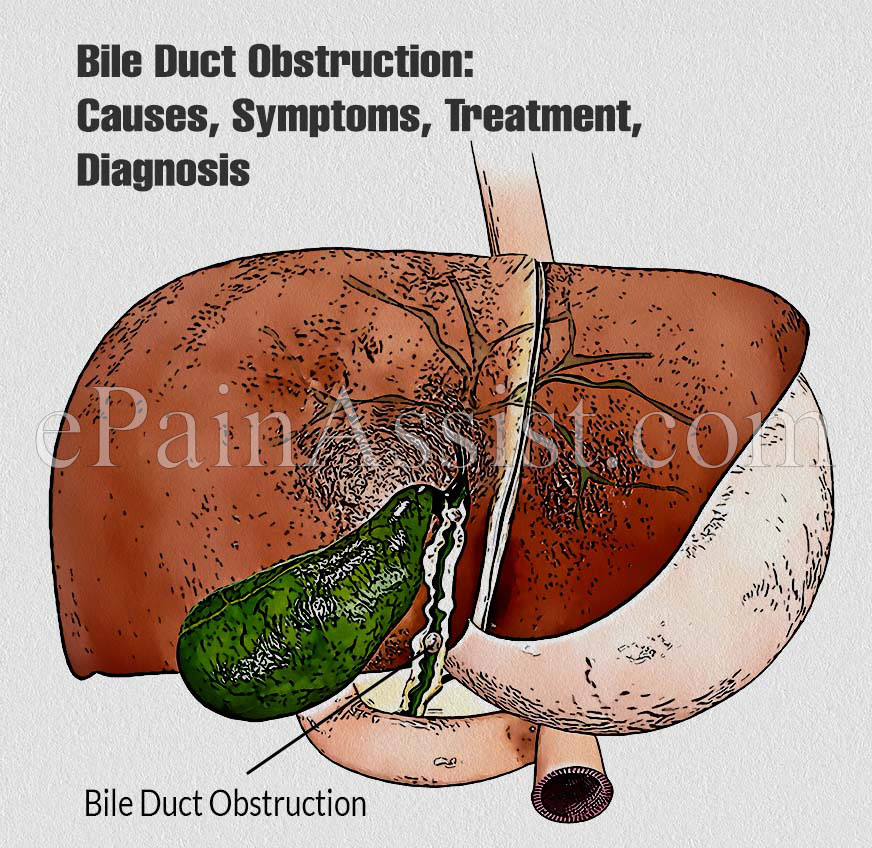What Do We Mean by Bile Duct Obstruction?
Biliary Obstruction is a condition that occurs when the bile duct which connects the gallbladder to the liver gets obstructed. This obstruction prevents the bile from flowing from the liver into the GI tract to aid in digestion of food. Bile is produced in the liver and is transported through the bile duct into the duodenum to help in the digestion of the food, especially fats. Bile mainly consists of fats, bilirubin, water, and inorganic salts.[1]
Biliary Obstruction, when it occurs, can lead to severe complications to include liver dysfunction, kidney problems, cardiac dysfunction, infections, bleeding problems, and even nutritional deficiencies. Biliary Obstruction is quite common around the globe and is the cause for significant mortality and morbidity. Gallstones are the primary cause for Biliary Obstruction which happens due to dilatation of the common bile duct and in people who suffer from jaundice.[1]

What Causes Bile Duct Obstruction?
The most common cause for Biliary Obstruction include:
Gallstones: This is the most common cause of Biliary Obstruction. The primary cause of gallbladder stone is a chemical abnormality within the gallbladder. If the stones formed are large then they may block the bile duct causing an obstruction.[2]
Cancer of the Bile Duct: This is yet another cause for Biliary Obstruction. Any tumor emanating from the bile duct tends to obstruct the pathway. In some cases cancers of the pancreas also may infiltrate the intestine and cause Biliary Obstruction. Some cancers tend to metastasize into the digestive tract and cause Biliary Obstruction.[2]
Injury or Trauma: In some cases, an injury or trauma to the area around the gallbladder may also cause Biliary Obstruction. This usually happens during a surgical procedure such as an endoscopy or a gallbladder surgery.[2]
Aside from the common causes for Biliary Obstruction, there are also certain risk factors that increase the likelihood for an individual to have Biliary Obstruction. These risk factors include:
- History of gallstones
- History of chronic pancreatitis
- History of a recent surgery around the gallbladder or the biliary ducts
- Trauma or injury to the abdominal area.[2]
What are the Symptoms of Bile Duct Obstruction?
The symptoms of a Biliary Obstruction either may be of sudden onset or may come on gradually. Majority of the symptoms related to Biliary Obstruction are caused when the products of the liver regurgitate and mix with the blood. Some of the symptoms are also caused when the bile duct is not able to deliver bile to the duodenum to aid in digestion. This results in the body not being able to absorb fats adequately.[2]
Jaundice is the primary symptom of Biliary Obstruction. This is because the bilirubin produced by the liver is not able to mix with the bile causing its accumulation. Due to this, the skin of the individual will become yellow. The color of the urine also becomes ark in color. Additional symptoms that are seen in people with Biliary Obstruction include:[2]
- Persistent itching
- Pain in the abdomen
- Fever along with night sweats
- Nausea and vomiting
- Fatigue
- Weight loss
- Poor appetite.[2]
How is Bile Duct Obstruction Diagnosed?
To diagnose Biliary Obstruction, the physician will first conduct a detailed physical examination. The physician will palpate the area around the gallbladder to look for areas of tenderness. The symptoms of Biliary Obstruction are quite similar to liver dysfunction and this is the reason why the physician may enquire about any history of alcohol or drug abuse.[2]
To confirm the diagnosis, a blood test will be done to look for the levels of bilirubin, which will be high in cases of Biliary Obstruction. The levels of alkaline phosphatase will also be high along with the liver enzymes. If Biliary Obstruction is suspected based on the blood work, then radiological studies in the form of abdominal ultrasound, CT scan of the abdomen, or ERCP will be done to confirm the diagnosis of Biliary Obstruction.[2]
How is Bile Duct Obstruction Treated?
The treatment for Biliary Obstruction depends on the underlying cause of it. In most cases, physicians remove gallstones when doing an ERCP but in some cases more detailed surgery will be required. In cases where the symptoms are severe and disabling then the physician will recommend complete removal of the gallbladder. This will prevent any chances of a recurrence of gallbladder stones. As gallbladder is not a vital organ in the body, people without it can live their lives normally.[2]
In cases of a malignant cause for Biliary Obstruction, the bile ducts in such cases will have to be drained. This will be followed by radiation and chemotherapy. If Biliary Obstruction is left untreated, then the individual may have to deal with potentially serious complications. Over time, they may also have to deal with liver dysfunction and biliary cirrhosis.[2]
Severe jaundice can also occur as a result of gradual accumulation of bilirubin due to Biliary Obstruction. Inadequate treatment of Biliary Obstruction may lead to bacteria backing up in the liver causing infection medically termed as ascending cholangitis.[2]
If the Biliary Obstruction is between the gallbladder and the common bile duct then the individual is at risk for developing another condition called cholecystitis. This condition is characterized by inflammation of the gallbladder which causes severe infection and even rupturing of the gallbladder. This is an emergent medical condition and requires prompt treatment. [2]
